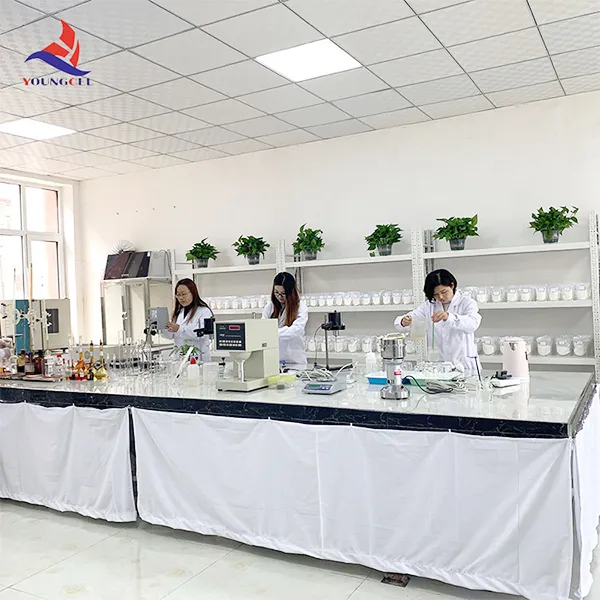Understanding Cellulose Ethers Nature's Versatile Polymers
Cellulose ethers are derived from cellulose, the most abundant natural polymer found in the cell walls of plants. They represent a crucial category of synthetic materials that are formed by the etherification of hydroxyl groups in cellulose chains. Over the years, cellulose ethers have garnered significant attention due to their versatile applications in various industries, including food, pharmaceuticals, cosmetics, and construction. This article explores the properties, production, and usage of cellulose ethers, highlighting their importance in modern technology and everyday life.
Properties of Cellulose Ethers
Cellulose ethers possess a unique combination of properties that make them exceptionally useful in an array of applications. One of their primary characteristics is their ability to form gels and films, which is invaluable in the formulation of products ranging from gels to coatings. Additionally, cellulose ethers are soluble in water, which allows them to act as thickening agents or emulsifiers in cosmetic and food formulations. Their gel-forming capability is primarily attributed to the hydrophilic nature of the ether groups introduced during modification, which enhances their water retention properties.
Another crucial aspect of cellulose ethers is their biocompatibility. Since they are derived from natural cellulose, cellulose ethers do not pose toxicity risks and are generally regarded as safe for human use. This property is particularly significant in the pharmaceutical industry, where cellulose ethers serve as excipients in drug formulations, enhancing solubility and controlled release.
Production Process
The production of cellulose ethers typically involves several steps, starting with the extraction of cellulose from renewable plant sources such as wood pulp or cotton. The extracted cellulose is then subjected to a chemical reaction known as etherification, wherein the hydroxyl groups in the cellulose react with alkyl or aryl halides in the presence of a suitable base. Common cellulose ethers include hydroxypropyl methylcellulose (HPMC),ethylcellulose, and carboxymethyl cellulose (CMC), each with distinct properties tailored for specific applications.
The degree of substitution, which represents the average number of hydroxyl groups replaced by ether groups, plays a crucial role in determining the properties of the final product. A higher degree of substitution generally enhances solubility in water and improves thickening ability. However, it may also affect the gel strength and other rheological properties. Manufacturers carefully control these parameters to produce cellulose ethers that meet the specific needs of various industries.
cellulos ether

Applications of Cellulose Ethers
The range of applications for cellulose ethers is vast, reflecting their versatility as functional ingredients. In the food industry, cellulose ethers are commonly used as food additives, where they serve as thickening agents, stabilizers, and emulsifiers. They improve the texture and mouthfeel of products, contributing to overall consumer satisfaction. For example, CMC is often found in ice creams and sauces, providing a creamy texture while preventing ice crystal formation.
In the pharmaceutical realm, cellulose ethers are employed in drug formulations as binders, disintegrants, and controlled-release agents. HPMC, for instance, is widely used in film coatings for tablets, providing a protective barrier that aids in the controlled release of the active ingredient. Furthermore, cellulose ethers are integral to the production of hydrogels, which have gained prominence in wound dressings and tissue engineering due to their excellent moisture-retention capabilities.
In cosmetics, cellulose ethers are utilized for their thickening and film-forming properties. They contribute to the stability of lotions, creams, and gels, enhancing the sensory experience during application. Additionally, their biocompatibility makes them suitable for sensitive skin formulations.
In construction, cellulose ethers play a pivotal role as additives in cement and mortar mixes. They improve workability, extend open time, and enhance the adhesion of materials, ensuring better performance during construction.
Conclusion
Cellulose ethers exemplify the remarkable potential of natural polymers modified through chemical processes. Their unique properties, combined with their safety and versatility, make them invaluable in a multitude of industries. As research continues to explore new applications and improvements in their production, cellulose ethers are poised to remain a staple ingredient in modern formulations, bridging the gap between nature and technology. Whether in your favorite food product, a pharmaceutical remedy, or a cosmetic treatment, cellulose ethers are quietly making a significant impact on our daily lives.
-
The Application and Significance of Construction RdpNewsMay.19,2025
-
Industrial Grade HpmcNewsMay.19,2025
-
Building Coating Adhesive Building Coating Adhesive HpmcNewsMay.19,2025
-
Application Of Hpmc For Detergent For Detergent In DetergentsNewsMay.19,2025
-
Application Of Hpmc Cellulose In Cement-Based MaterialsNewsMay.19,2025
-
Application Of High Quality Hpmc For Construction In The Field Of ConstructionNewsMay.19,2025




